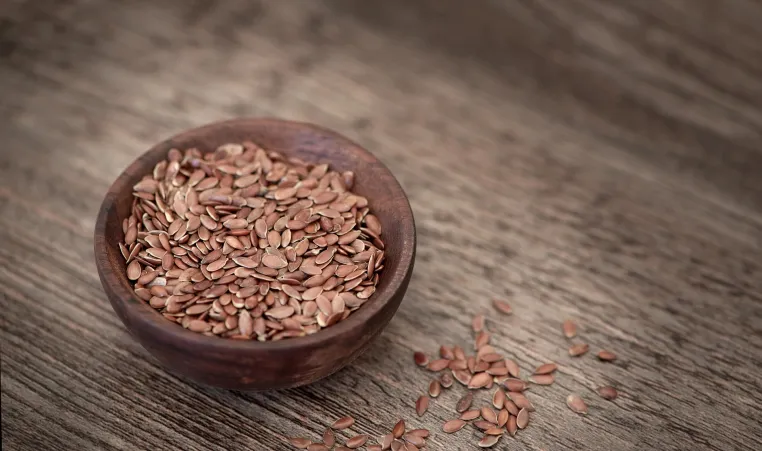
From the Ground up: Nutrition in Seeds
I was recently reflecting on my time as a dietitian and thinking about common food questions and topics I talk about with clients, one of them
being the nutrition of seeds. This topic sparks quick interest as the nutrition profile of seeds and ways to incorporate them is often a mystery to many. I absolutely love talking about seeds because they truly are a nutrition powerhouse, yet very often overlooked. So, what makes them a powerhouse? Let’s do a brief overview!
Flaxseed
Flaxseed is a fantastic source of the plant based omega 3 fatty acid known as alpha-linoleic acid (ALA). This particular fatty acid may be beneficial for both cardiovascular and brain health. Fun fact about flaxseed: it is the richest source of lignans, a component of plants that has shown some evidence to decrease risk of cancer, cardiovascular disease, and decrease menopause symptoms. A fun way to use flax is in muffins. Flax works well in many gluten and dairy free recipes.
Chia Seeds
For a small seed, they sure pack a lot of fiber! Even just a teaspoon provides a couple of grams of fiber. Breakfast foods such as oatmeal, cereal, yogurt bowls, and smoothies are easy ways to add them to your day. Chia seeds are also one of the few plant based sources of a complete protein, meaning it contains all of the building blocks of protein we need from food in a day. These are just a few of the nutritional highlights of these seeds. Not a bad way to start your day!
Pumpkin Seeds
Roasted pumpkin seeds are one of the richest food sources of magnesium, a mineral which is involved in bone health, energy production, DNA production, and more. These seeds are also one of the best plant based sources of zinc, which is important for immune function and wound healing. A simple favorite of mine is peanut butter toast with pumpkin seeds sprinkled on top, cinnamon, and sometimes, a drizzle of honey. If you like to bake bread, pumpkin seeds give a really nice texture and flavor when added to the top of the bread before baking.
Hemp Hearts
Hemp hearts are one of the higher protein containing seeds. They are also an excellent source of vitamin E, an antioxidant that protects our cells from damage and keeps our immune systems healthy. Hemp hearts have a slight nutty flavor compared to other seeds, and go well in
cereal, yogurt bowls, and homemade granola bars. Check out this granola bar recipe!
Fennel
For a spice, I am personally impressed with the amount of potassium provided in fennel. Potassium, an electrolyte, works with water and salt to regulate our hydration status. My personal favorite way to add fennel seed is sprinkle some in a veggie and egg scramble while the veggies are first cooking. I find a small amount almost gives a pepperoni-like flavor kick. But be aware as too much can taste more like licorice.
Pomegranate Seeds
I had to throw this one since they are such a fun and pretty seed! Pomegranate seeds are loaded with antioxidants, which is indicated by their bright red color. These are a great addition to many salads, such as greens with walnuts, goat cheese, pear or other fruit (mentioned recipe in a past blog :)). Like pumpkin seeds, I find pomegranate seeds also make a fun topping on peanut butter (or other nut butter) toast. Or try both of them together!
Sesame Seeds
Sesame seeds had to make this blog because they are the seed containing the largest amount of iron, a key mineral in the delivery of oxygen to our cells. Toast sesame seeds to add a small crunch to noodle dishes or steamed veggies. I thought this recipe looked like a fun one to try—though I vote for more sesame seeds than the suggested garnish.
I hope these ideas inspire even more ways to enjoy and incorporate all of
the seeds into your food regimen. Happy experimenting!
